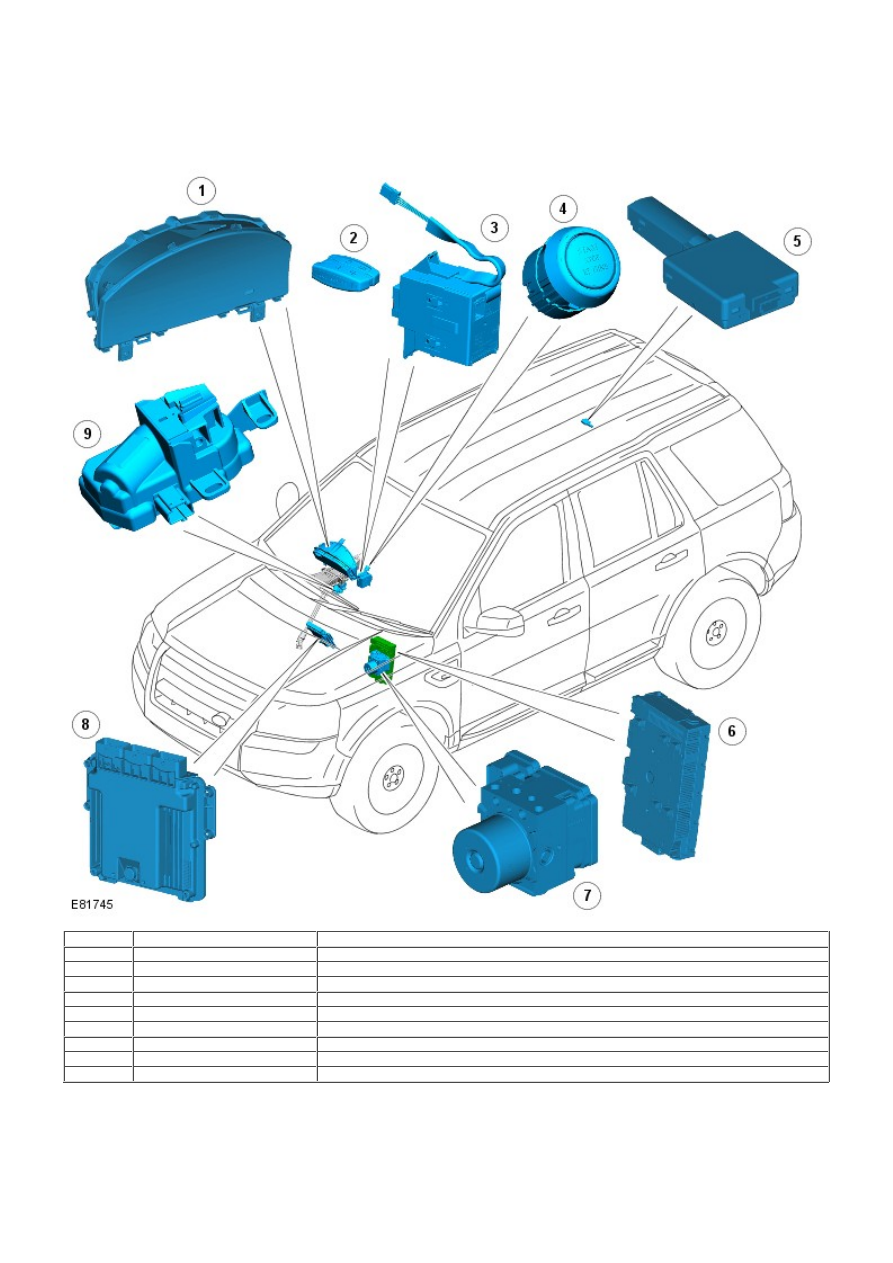Frelander 2. Manual - part 515

Anti-Theft - Passive - Anti-Theft - Passive
Description and Operation
COMPONENT LOCATION
Item
Part Number
Description
1
-
Instrument cluster
2
-
Remote handset
3
-
Start control module
4
-
Stop/Start switch
5
-
Radio Frequency (RF) receiver
6
-
Central Junction Box (CJB)
7
-
Anti-lock Brake System (ABS) module
8
-
Engine Control Module (ECM)
9
-
Electric steering column lock
OVERVIEW
The Passive Anti-Theft System (PATS - immobilization) provides a secure interface between the CJB , ECM and ABS module
to prevent unauthorized starting of the vehicle. This is achieved by having uniquely coded remote handset and encoded
data exchange between modules.
Unauthorized starting prevention is achieved by immobilization of the engine crank system, fuel system and ignition
system.